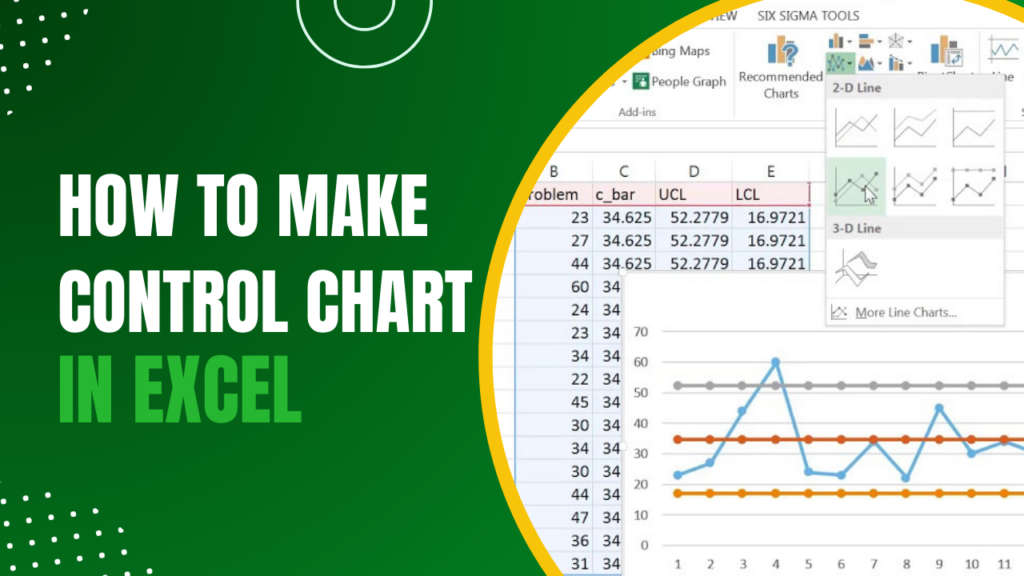Sure! Here’s a brief introduction for your blog article:
Are you looking to create a control chart in Excel? In this article, we will guide you through the steps to make a control chart using Microsoft Excel. Control charts are essential tools in quality management, allowing you to monitor process performance and identify any variations or trends. Stay tuned for our step-by-step tutorial on how to create an effective control chart in Excel. Let’s dive in!
How to Create a Control Chart in Excel: A Technology Guide
To create a control chart in Excel, follow these steps:
1. First, input your data into an Excel spreadsheet.
2. Next, select the range of data that you want to use for the control chart.
3. Go to the “Insert” tab and click on “Scatter” in the “Charts” group.
4. Choose the scatter chart type that includes lines connecting the data points.
5. Right-click on one of the data points and click on “Add Trendline” from the context menu.
6. In the “Trendline Options” dialog box, select “Linear” as the trendline type.
7. To add control limits to the chart, calculate the mean and standard deviation of your data.
8. Add these values to your chart by including two additional series: one for the upper control limit (mean + 3 * standard deviation) and one for the lower control limit (mean – 3 * standard deviation).
9. Format the control limit lines using the “Format Trendline” options, such as changing their color or line style.
10. Finally, label your chart with a title, axis labels, and any other necessary information.
By following these steps, you can easily create a control chart in Excel to monitor and visualize process variations. Control charts are widely used in technology industries to identify and address issues that may occur during production or data analysis. They provide a visual representation of how a process is performing over time, helping teams make informed decisions and take corrective actions when necessary. Creating control charts in Excel enables efficient data analysis and facilitates continuous improvement efforts.
Frequent Questions
How can I create a control chart in Excel?
To create a control chart in Excel, you can use the built-in statistical functions and charting tools. First, organize your data with columns for samples/observations and corresponding measurements. Next, calculate the statistical measures needed for the control chart, such as mean, standard deviation, and control limits. Then, create a line chart using the sample/observation column for the x-axis and the measurement column for the y-axis. Finally, add horizontal lines for the mean and control limits using Excel’s chart formatting options.
What are the steps to make a control chart using Excel?
Here are the steps to make a control chart using Excel:
1. Gather your data: Collect the measurements or observations that you want to plot on the control chart.
2. Open Excel: Launch Microsoft Excel on your computer.
3. Create a new spreadsheet: Start a new blank spreadsheet in Excel.
4. Organize your data: Enter your data into columns in Excel. Make sure to label the columns appropriately.
5. Calculate statistical values: Use Excel formulas to calculate the average and standard deviation of your data.
6. Create the control chart: Select the data range and choose the appropriate chart type (e.g., line chart).
7. Add control limits: Calculate the upper and lower control limits based on the average and standard deviation. Add these lines to the chart.
8. Format the chart: Adjust the chart’s appearance, including labels, colors, and styles, to make it visually appealing and easy to interpret.
9. Analyze the chart: Interpret the control chart by looking for any points that fall outside the control limits or exhibit consistent patterns.
10. Save and share: Save your Excel file and consider sharing the control chart with your team or stakeholders.
Remember to regularly update the control chart as new data becomes available to monitor the stability of your process.
Are there any Excel templates available for creating control charts?
Yes, there are Excel templates available for creating control charts.
In conclusion, creating a control chart in Excel is a powerful tool for analyzing and monitoring data trends in various technological processes. By using this data visualization technique, technology professionals can easily identify and address any deviations from the desired performance standards. With its user-friendly interface and robust data analysis capabilities, Excel offers a convenient solution for efficiently tracking and controlling variables in technological operations. This empowers businesses to make informed decisions and take proactive measures for improving overall efficiency and quality in the rapidly evolving realm of technology. Harnessing the potential of control charts in Excel is an essential skill that every technology enthusiast should consider mastering.



